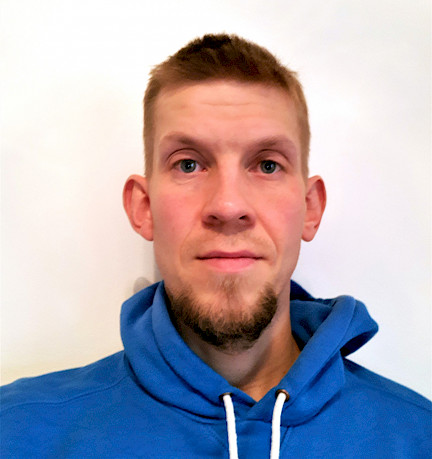Markus Halonen: Spreading information is an important part of promoting physical activity
Making higher education culture more physically active is a complex goal to achieve, and in order to reach it, we should approach the target group from many different angles. It is, of course, important to remind people about the benefits of exercise and the disadvantages of physical inactivity, but we also need more detailed information when we want to transfer new learning into practice in increasing physical activity. In August 2020, the project Tikissä työelämään organised a series of three webinars to examine both the benefits of physical activity and also possible disadvantages from the point of view of e.g. brain health and the new physical activity recommendations.
The brain loves exercise
Juho Strömmer, PhD in Psychology, has studied, among other things, the effects of physical activity on the structure and functioning of the brain. His lecture focused on the relationship between physical activity, learning and brain health.
Research shows that moderate-intensity aerobic physical activity increases the formation of new nerve cells and creates new connections between existing nerve cells. This scientific evidence is challenging the current “sit, listen and learn” model.
Reasons for the importance of physical activity in shaping and regenerating the brain can be seen in the evolution of the human species. Bodily movement makes blood and oxygen flow into the human brain. Movement also activates control of motor functions, sensory and attention systems, decision-making and planning skills as well as spatial awareness.
Our brain receives a huge number of sensory stimuli, especially outdoors, for example when we walk along a forest path. The processing and evaluation of these sensory stimuli has been useful and played an essential role in the history of our species. When we stare at the computer screen, our brain can work efficiently for a moment at a time, but monotonous stimuli tire the brain quickly and our efficiency decreases if we do not take regular breaks.
Restoring the honour of everyday exercise
Johanna Ihalainen, Doctor of Sport Sciences, discussed the versatile benefits of movement and physical activity in her lecture. Ihalainen works as a Postdoctoral Researcher in the Training Room project, which develops preventive health care and injury rehabilitation for athletes as well as methods and operating models for preparing athletes for training and helping them recover from it.
In her presentation, Johanna examined the new recommendation for weekly physical activity for adults aged 18–64, published in 2019, in a thought-provoking way. In the updated recommendations, the weekly “training recommendation” did not change: for substantial health benefits, adults should do muscle-strengthening and balance training activities twice a week and engage in 1 hour 15 minutes of vigorous-intensity aerobic physical activity or 2 hours 30 minutes of moderate-intensity aerobic physical activity per week.
What is new in the recommendation is that we should take exercise breaks and engage in light-intensity everyday exercise as often as possible. Hopefully, this recommendation will also be taken seriously in the higher education world. The recommendation no longer mentions how often we should take breaks from sitting, but states bluntly that we should take exercise breaks whenever possible.
Research shows that higher education students already sit so much that a sufficient number of exercise breaks for their health means around two hundred of one-minute breaks per day for an average student. That’s why it is easy to accept the recommendation to increase everyday exercise without an upper limit.
What can we learn from top athletes?
In the world of high-performance sports, we can easily find methods that we can similarly use to maintain our vitality and listening to our body under the pressures of higher education studies. In high-performance sports, recognising overstrain and stress early plays an important role in preventing sports injuries and cycles of illness. This will help to avoid long breaks from training and a possible, more severe state of overstrain, which is also misleadingly called overtraining.
“Anyone who can train will make progress” sums it up in a way that applies to all. Anyone who can study will make progress. That’s why it is important to remember to listen to your body. Sometimes you should skip the planned hard workout. Light-intensity physical activity often promotes recovery better than lying on the couch.
Finally, a reminder of something that we cannot store for long periods of time. Both Strömmer and Ihalainen emphasised the importance of high-quality sleep as an enabler of both brain and physiological development and learning. So, if you feel tired, you can make the situation better by increasing light-intensity physical activity outdoors and by going to sleep at a reasonable time.

Markus Halonen
The author is a Sports Instructor and Project Manager of the LUT Universities’ project Tikissä työelämään.
You may also be interested in
-
SELL-kisojen isännöinti tarjoaa mahdollisuuden kansainväliseen profiloitumiseen
Published:SELL Student Games on kansainvälinen korkeakouluopiskelijoille tarkoitettu opiskelijaliikuntatapahtuma. Toukokuun toiseksi viimeisenä viikonloppuna pidettävien SELL-kisojen järjestämisestä vastaavat vuoroin neljä SELL-maata: Suomi, Viro, Latvia ja Liettua. Vuonna 2025 on jälleen Suomen vuoro isännöidä kisoja.
-
Physical activity fixes the corona-induced wellbeing deficiency
Published:Distance learning, forced by corona constraints, easily exposes the student to difficulties in concentration, body aches and loneliness. Even before the corona, students sat for nearly 11 hours a day. In light of these facts, higher education sports are a necessary pillar of student and staff well-being now in the final stages of the pandemic as well as when studies move back to campuses.
Read more about article: Physical activity fixes the corona-induced wellbeing deficiency
-
Ruotsinkielinen seminaari Liikkuva Korkeakoulusta 27.11.2020
Published:Finlands Svenska Idrotts järjesti Liikkuva opiskelu -aiheisen seminaarin ruotsiksi 27.11.2020. Seminaariin osallistui Opiskelijoiden Liikuntaliiton puolesta vuoden 2020 varapuheenjohtaja Sanna-Maria Ahl. Hän piti siellä esityksen opettajien merkityksesta osana opiskelijoiden matalankynnyksen liikkumista.
Read more about article: Ruotsinkielinen seminaari Liikkuva Korkeakoulusta 27.11.2020
Share this page
Page last updated 20.5.2021
